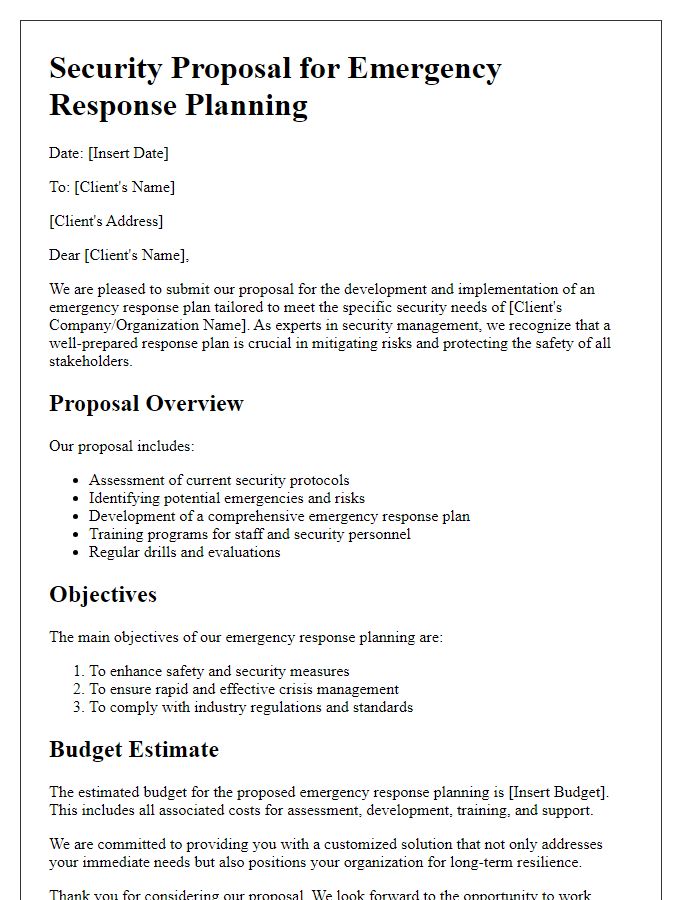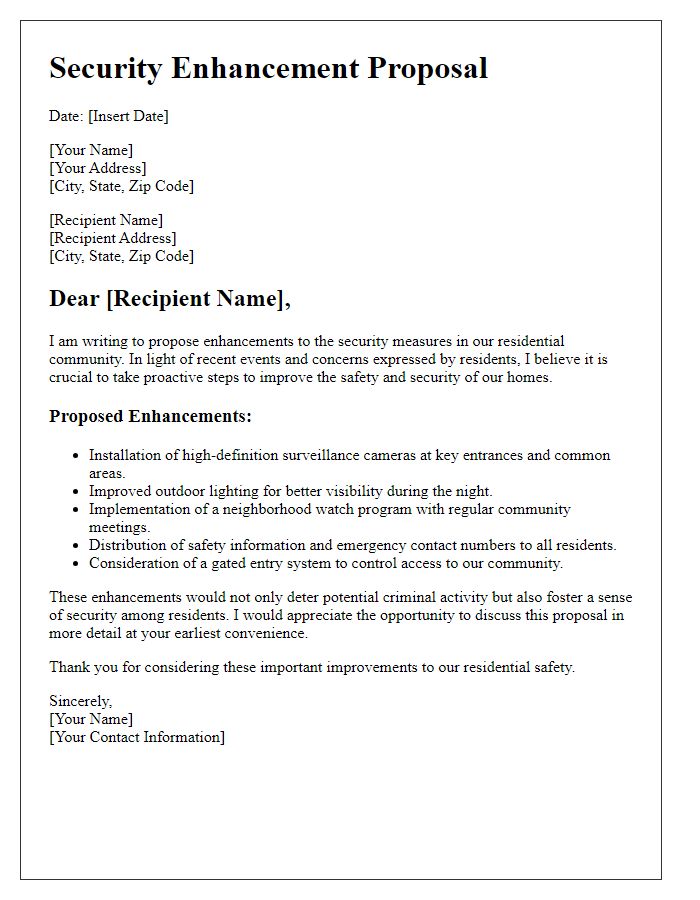Are you looking to create a compelling security proposal? Crafting a well-structured letter is essential for capturing the attention of your potential clients or stakeholders. In this article, we'll discuss key elements to include in your security proposal letter, ensuring it resonates with your audience and effectively communicates your message. So, let's dive in and discover how you can elevate your proposal to stand out from the crowd!

Introduction and Objective Statement
In a contemporary urban landscape, safeguarding critical infrastructure such as data centers (facilities housing computer systems and associated components) has become paramount. Security proposal arrangements aim to address rising threats, including cyberattacks and physical breaches. The objective is to establish robust measures that ensure the integrity and availability of data while protecting sensitive information from unauthorized access. Proposing a comprehensive strategy tailored to specific vulnerabilities enhances not just the security posture but also assures compliance with regulatory standards such as GDPR (General Data Protection Regulation) and HIPAA (Health Insurance Portability and Accountability Act). Engaging stakeholders from both technology and security domains is crucial for aligning operational goals with security initiatives, ultimately fostering a resilient environment against evolving risks.
Detailed Security Measures and Protocols
Comprehensive security measures are essential to protect sensitive information and assets in corporate environments. Implementation of state-of-the-art access control systems, utilizing biometric technology such as fingerprint scanners, can restrict unauthorized entry. Regular training sessions for employees on cybersecurity protocols, including the recognition of phishing attacks and the importance of strong password policies, can significantly enhance overall security awareness. Surveillance systems equipped with high-definition cameras, strategically placed around critical areas, enable 24/7 monitoring and quick incident response. Additionally, establishing an incident response team, consisting of cybersecurity experts and emergency responders, ensures preparedness for potential breaches or safety threats. Regular audits and assessments of security protocols are vital, enabling continuous improvement and adaptation to evolving threats.
Personnel and Resource Deployment
In the comprehensive security proposal, personnel deployment involves the strategic assignment of trained security staff to various locations, ensuring maximum coverage and response capability. Key resources, including surveillance cameras and alarm systems, will be positioned at critical entry and exit points within the facility, such as main entrances and parking lots. The personnel, consisting of both armed and unarmed security officers, will be trained in conflict resolution and emergency response protocols, enhancing the overall safety environment. Additionally, a central command center will monitor real-time data from deployed resources, facilitating swift action during incidents. Routine patrols, conducted at determined intervals, will cover high-risk areas such as loading docks and perimeters, ensuring a proactive security posture.
Budget and Cost Breakdown
A detailed budget and cost breakdown for a security proposal is essential to ensure clarity and transparency in the financial aspects of the project. Key expenses include personnel costs, which encompass salaries for security staff, such as licensed security officers trained in emergency response. Equipment acquisition should cover surveillance cameras, alarm systems, and access control technology from reputable manufacturers like Hikvision and Honeywell, with estimated costs running into thousands of dollars. Installation services must be evaluated, taking into account local labor rates, typically ranging from $50 to $100 per hour. Ongoing maintenance contracts, including software updates and hardware repairs, should also be factored in, often representing 10-15% of the total equipment cost annually. Training expenses for staff, ensuring compliance with local regulations and safety protocols, must be included, along with insurance premiums covering liability in case of security breaches. A comprehensive line-item budget not only fosters trust but also aids in monitoring expenses throughout the project lifecycle.
Implementation Timeline and Milestones
Implementation timelines for security proposals, such as cybersecurity initiatives or physical security measures, typically outline critical phases, tasks, and deadlines. Effective timelines may include phases such as initial assessment, stakeholder engagement, development of security protocols, procurement of necessary technology (like access control systems or surveillance cameras), installation, training of personnel, and ongoing evaluations. Milestones can range from completion of risk assessments to the finalization of compliance checks by regulatory bodies, often spanning several weeks to months. Clear dates for each milestone enable teams to track progress and ensure accountability, ultimately enhancing the effectiveness of the security measures implemented.
Letter Template For Security Proposal Arrangement Samples
Letter template of security proposal request for enhanced surveillance systems

Letter template of security proposal for facility access control solutions












Comments